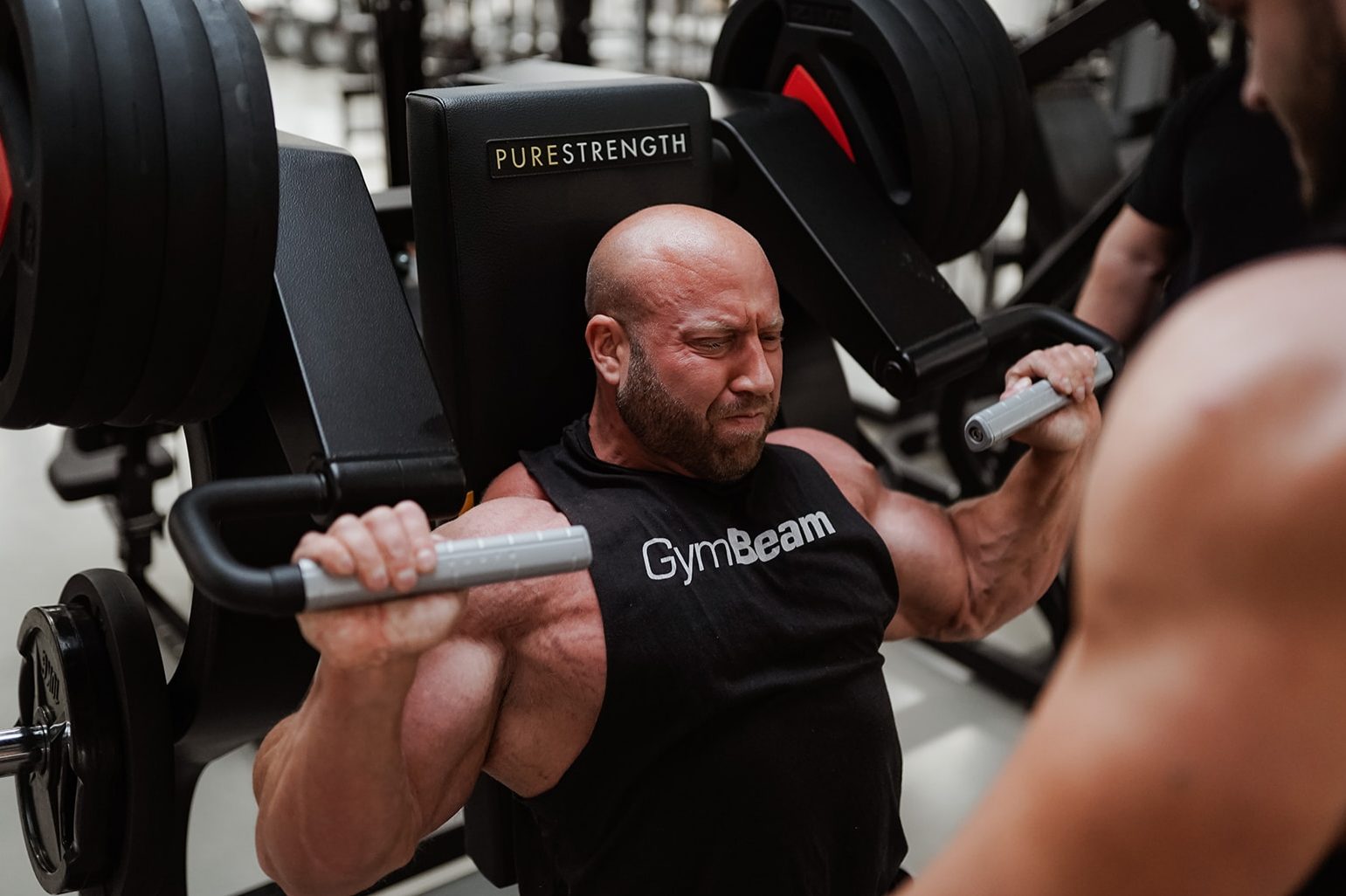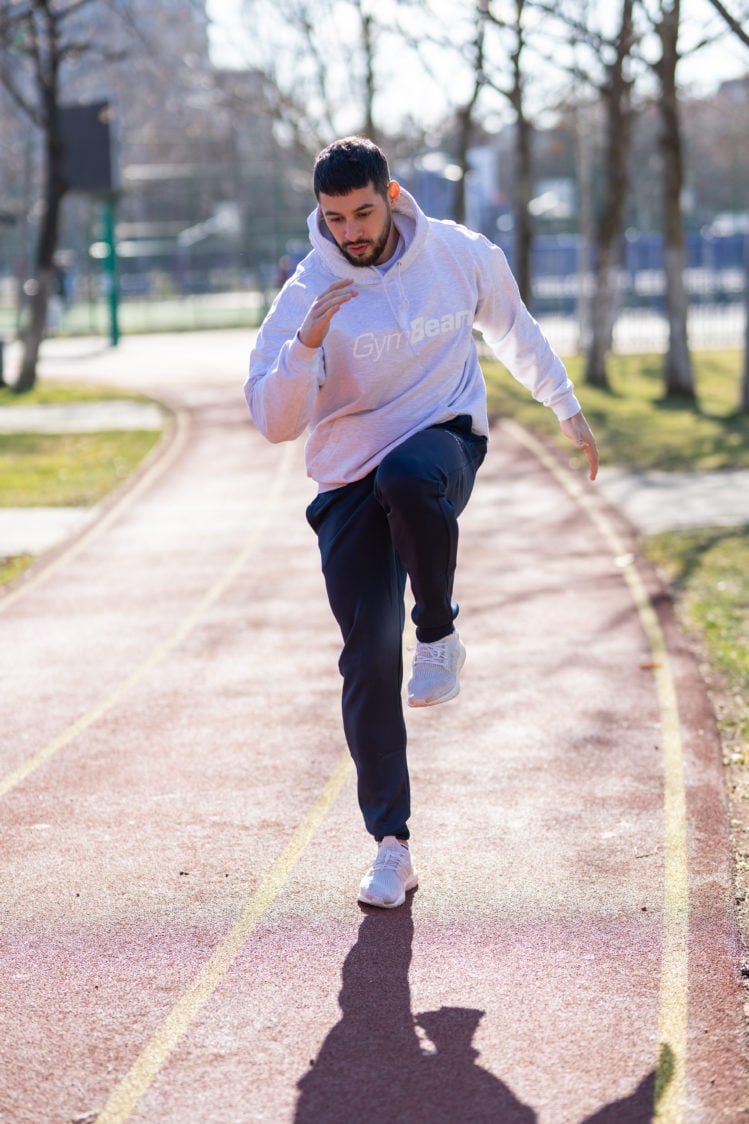Table of Contents
Exercise is one of the best things you can do for your health. Everybody who works hard definitely deserves admiration. However, most beginners tend to give up after a couple of months due to two simple reasons. They either complain about not having time, or they’re frustrated when they see no results. The results don’t arrive from day to day, though. But if you can’t see the result even after a few months, you are most likely doing something wrong.
The thing is that beginners often make prevalent training mistakes that slow down or destroy their progress. On top of that, they’re complaining about unpleasant injuries associated with incorrect technique. Therefore, today, we will present you the nine most common training mistakes that might be hindering you from achieving your dream goals. Moreover, we will try to find the most effective solutions so you can actually see the results.
1. You lift either too heavy or too light weights
The beginnings tend to be full of enthusiasm and big ambitions. However, that often ends up in lifting weights that are too heavy. But the main logic is: the heavier weights you lift, the stronger you get, right? Unfortunately, it’s not that easy. It holds that lifting a weight that’s too heavy for you will make your body engage other muscles to help it. Therefore, you cannot maintain the correct technique and form, which relates to a higher risk of injury.
Even though you stimulate the working muscle, with a bad performance and, by engaging other muscles, it all leads to deterioration rather than successful training. When you’re a beginner, lifting too heavy weights is the way to getting injured. Too light weights will, on the other hand, allow you to train for a longer time but will more likely support muscle endurance than develop strength. [1] [4]

Instead of loading weights on the barbell, try a bodyweight workout at first. Once you acquire the correct technique, you’ll send your body a signal that you want to perform some physical activity. Start, for example, with the squat and try to focus on the technique. Once you master it and the bodyweight exercise is no longer challenging for you, feel free to add weights. Start, of course, with a lower load, ideally with an empty barbell or a 10 kg. Once again, pay attention to maintaining the correct technique during the exercise, especially when adding heavier weights. When choosing the weight, bear in mind you should be able to do 10 reps with a medium level of difficulty. [2–3]
You might be interested in these products:
2. You are not familiar with the technique
It’s easy to go to the gym, grab some dumbbells, and start exercising in a chaotic way. You can persist in training this way for a week, a month, or even longer. But what comes next? Usually, there are only two types of scenarios. In the first one, you will get injured, which will keep you from exercise for a long time. In the other case, you will end up demotivated since you’ve been working out for a couple of months, and the results have still not arrived. The incorrect technique may contribute to both.
The technique of each exercise is crucial if you want to minimize injury and involve your muscles properly. However, many beginners come to the gym motivated to do the deadlift with extreme weight. Unfortunately, they often round their back while performing it. It hurts us just to think of it. The same applies to the squat. Many people tend to move the weight to toes or heels. That is also associated with the incorrect use of machines. Another example is those mysterious moves with dumbbells, which doesn’t really remind of efficient and well-performed training. Sometimes it’s just not enough to watch videos on YouTube because each of us has slightly different biomechanics of movement.
In addition, the wrong technique may lead to pain or even a painful injury. The dumbbell workout is no exception. It again has an impact on your performance if your technique is incorrect. Due to the wrong technique and insufficient flexibility, you won’t be able to use the full range of motion, which influences your overall strength. Several studies confirm this. They claim that a full range of motion leads to higher performance, better training results, muscle growth, and increased strength. That is why it is advisable to start exercising with a trainer who will teach you the right technique. [5–6]

3. You focus too much on isolated exercises or specific muscle groups
This point mainly concerns men. At the beginning of their fitness journey, many men dream of having perfect large biceps like superheroes from DC Comics. So, they focus their training on isolated exercises and try to pump their biceps in a million various ways. Isolated exercises are a great way to practice one muscle group. However, by completely excluding the complex exercises, you lose the knowledge of the right technique in basic strength exercises, as well as the development of overall muscles and strength.
Complex exercises such as deadlift, squat, bench press or pull-ups allow you to train several muscle groups at once. Thanks to this, you develop a functional strength, which you can even use in daily life much easier. In addition, you will improve your overall progress. The problem also occurs if you start to focus too much on the specific muscle group. That also applies to women, who usually strive for a perfect butt and, therefore, spend hours with strength leg workout.

There would be nothing wrong with that if they did not neglect the other muscle groups. As a result, while you build your preferred muscle group, the others remain almost intact. If you continue exercising in this way, you risk not only an asymmetrical figure, but also an unpleasant injury from overtraining the specific muscle group. [7–8]
4. You work out to the maximum and forget about deload
It is okay to put the maximum effort into your training, but it would not work in the long run. To constantly improve and move forward, you should achieve a progressive overload in your training. It will help you get a strong impulse with each workout, which will show better results in the long term. Practically, this means building not only muscles but also strength.
However, for even more effective training, you should not forget to ease off. This phase is called deload and is characterized by reducing the intensity of your training to about 50%. You should involve it every fourth to fifth training week. By implementing deload into your training routine, adaptation in the form of strength and muscle growth will have the chance to manifest. In practice, you can just reduce the load on the barbell or the number of sets or have longer breaks between sets. [9–10]
5. You’ve got stuck in the same training routine
If you do the same in every workout, you probably do it very well. This phenomenon is called the principle of adaptation. By repeating the same exercises with the same load over again, you get used to them. That leads to stagnation and impedes your progress. This method may be ideal for those who want to stay fit, but it does not work when you aim to build muscle and increase your strength.
If you perform the same exercises with the same weight during each workout, you will probably reach the top of the imaginary pyramid, where you will not be able to progress anymore. One of the effective ways to overcome this stagnation is to respect the principle of progressive overload in your training. It means that you gradually increase the weight on the barbell, add repetitions or have shorter breaks. We covered more of this topic in our article With Muscle Confusion, Can We Gain Muscle Faster or Lose Weight? [11]

6. You skip the warm-up phase
Looking forward to workout is awesome. However, if it overwhelms you so much that you run to the dumbbells rack right after changing your clothes at the gym, it is not the best idea. You have missed an essential warm-up phase that can prevent injuries and even increase the effectiveness of your training.
A study published in the magazine Journal of Strength and Conditioning Research also highlighted the importance of the warm-up phase. The wrestlers, who in four weeks replaced static stretching with the dynamic warm-up, were observed. As a result, they had greater strength, muscular endurance, and anaerobic capacity. They were also more agile compared to the group that continued with static stretching. [12]
If you want to make use of each workout, you should spend about 10 minutes before on an activity that raises your body temperature (warm-up), mobilizes your joints, and prepares your body for the upcoming exercise. There are many possibilities. You can try, for example, jumping rope. Jumping jacks, light jogging or rowing machine at a moderate pace can also be a good choice. [12–13]
By omitting the warm-up phase, you run a higher risk of muscle injuries, which we addressed in the article What to Do with a Muscle Strain or Muscle Tear and How To Tell Them Apart.
7. You underestimate the importance of food and hydration
And let’s be completely honest here. What goal do you want to achieve by exercising? Do you want to gain muscle? Do you want to change your figure? Lose weight? Feel healthier and improve your life? Whatever the answer, you should know that the way to your goals can be significantly affected by diet and water intake. Beginners tend to eat just before physical activity. This step is not wise because digestion is a process that consumes energy. During this process, a large part of the blood is transferred to the digestive system, where nutrients are absorbed into the bloodstream.
However, if you do not give your digestion enough time and start an intense workout too soon, the blood will be forced to pass from the working digestive system to the working muscles. As a result, you will feel sick and stuffed during your training. It also influences your performance since you can’t put the maximum effort into the exercise. So, try to eat the last meal at least 2-3 hours before training. If you lack energy, have easy-to-digest carbohydrates, a banana, for example, about half an hour before your workout. However, each of us is different, and it may be convenient for someone to eat an hour before training. Therefore, it is necessary to listen to your body and respond to its needs. [14]
You can find more tips about this topic in the article What To Eat Before and After a Workout to Reach Maximum Results.
When it comes to a particular diet, many beginners tend to underestimate their caloric intake. It is responsible for whether you lose or gain weight. If you eat too little, you may feel tired and weak during your workout. If your caloric intake is too high, you will most likely put on weight. The key to success is a balanced diet in the caloric amount that best suits your goals. Our online calculator will help you calculate calories more accurately. [15]
You should follow a few principles with a healthy diet:
- minimize the consumption of ultra-processed foods
- eat lots of fruits and vegetables
- try to take 1.4 – 2.4 g of protein per kilogram of body weight [23]
For more tips, be sure to check our article What to Eat and How to Exercise to Finally Gain Muscle?
You should also not underestimate the water intake, either. Improper hydration can affect your physical performance. It especially applies to longer, intensive or endurance workouts. The effect of hydration on physical activity was also examined in one of the studies, which concluded that an insufficient water intake reduces performance in activities that last longer than 30 minutes. [16]
General recommendations regarding the fluid intake say that you should drink:
- 2.7 litres of fluids for a woman (approx. 11 cups a day)
- 3.7 litres of fluids for a man (approx. 15 cups a day)
- 30 – 45 ml of water per kilogram of body weight [17]
However, if you sweat a lot or exercise in a hot environment, you need to drink even more water. Water intake also affects our overall health. This issue is explained in more detail in the article How Insufficient Water Intake Affects Your Health.
8. You find the regeneration useless
Naturally, you care about exercise. However, you should not neglect the time needed for regeneration. It is a natural process of restoring the physical and mental strength disturbed by the previous load, such as the workout. During this process, the muscle fibres are damaged, on which small cracks are formed.
If you do not give your body enough regeneration, you increase the chance of injury of the soft tissues and the overall musculoskeletal system. Not to mention that you can overtrain. Accompanying phenomena of this stage are, for example, fatigue, increased muscle soreness, lack of energy or even reluctance to train. [18–19]
You can support post-workout regeneration in different ways, for example, by:
- Sleeping, with the fact that those who exercise intensively need more rest than the average, less active person. There is no specific formula regarding the amount of sleep because its need is individual for each of us. However, general recommendations for adults include 7-9 hours. If you are interested in specific tips for better sleep, be sure to read our article How To Fall Asleep Quickly? Try These Simple Tips For A Better Sleep. [20]
- Massage, which is also preferred by many professional athletes. Several studies have found that massage can speed up recovery after a workout. To learn more about this topic, read How to Support Regeneration Using a Massage Gun and Other Tools. [21]
- Compression clothing, which is quite common nowadays. There are already studies according to which compression clothing reduces the process of restoring physical strength after training. [22]
- Avoiding alcohol, which harms health in several aspects. Regeneration is no exception, as confirmed by one of the studies. It concludes that alcohol consumption after training has impaired the ability of muscles to replenish glycogen. In addition, alcohol impairs proteosynthesis, i.e., the efficiency of muscle growth. [24]
- A balanced diet because what you consume depends on not only before but also after the training. Regeneration depends on a sufficient intake of all micro and macronutrients, but also energy. You can support it with protein and easily absorbed carbohydrates. In this case, for example, a protein, a piece of fruit, or FueGain, a complex blend of nutrients, will help. [25]

9. Your exercise regime is inconsistent
You have many occasional hobbies, but exercise is not one of them. Many people come to the gym twice a week and then don’t show up for another seven days. Subsequently, they will return, but now only once. They repeat this procedure in various combinations and exercise whenever they please. They have no system and forget that this way of exercising, after all, leads nowhere. It is challenging to achieve your goals this way, and in addition, you increase the risk of injury caused by the impact load.
Instead of going to the gym from time to time, choose the days you will go there for sure. Take them as a commitment to you. In many cases, it turns out to be ideal to do exercise three times a week. You can then also add your favourite sport. If you are interested in how to compile a high-quality training plan, read our article How to Create a Quality Workout Plan – Tips, Trainings, Most Common Mistakes. [26]
Conclusion
At times, training seems to be a simple thing. Just watch a few videos on YouTube and repeat the technique from someone you think performs it right. However, if we look at this issue in more detail, we will find that efficient training is more complex. If you are a beginner, you might be making many mistakes during exercise, which only unnecessarily hinder your progress. However, if you stick to the points we mentioned in today’s article, you will get a great foundation to move closer to your fitness goals. We wish you good luck.
[1] Joseph Wilson - The Worst Mistakes Everyone Makes When Lifting Weights – https://www.healthdigest.com/340802/the-worst-mistakes-everyone-makes-when-lifting-weights/
[2] Stephanie Mansour - 3 common strength training mistakes (and how to fix them) – https://www.nbcnews.com/better/lifestyle/3-common-strength-training-mistakes-how-fix-them-ncna961406
[3] HUNTER, GARY R., FISHER, GORDON, NEUMEIER, WILLIAM H. - Exercise Training and Energy Expenditure following Weight Loss – https://journals.lww.com/acsm-msse/Fulltext/2015/09000/Exercise_Training_and_Energy_Expenditure_following.22.aspx
[4] Cassei Lynn Lambert - 4 Things I Wish I Knew Before I Started Lifting Weights – https://www.self.com/story/things-wish-knew-before-started-lifting-weights
[5] Gerard E McMahon, Christopher I Morse, Adrian Burden, Keith Winwood, Gladys L Onambélé - Impact of range of motion during ecologically valid resistance training protocols on muscle size, subcutaneous fat, and strength – https://pubmed.ncbi.nlm.nih.gov/23629583/
[6] K Bloomquist, H Langberg, S Karlsen, S Madsgaard, M Boesen, T Raastad - Effect of range of motion in heavy load squatting on muscle and tendon adaptations – https://pubmed.ncbi.nlm.nih.gov/23604798/
[7] Gabby Landsverk - 5 strength-training mistakes that are stalling your gains, and how to fix them – https://www.insider.com/common-strength-training-mistakes-that-stall-gains-2021-9
[8] James Hundson - 10 Most Common Mistakes Women Make in the Gym – https://www.lifehack.org/articles/lifestyle/10-most-common-mistakes-women-make-the-gym.html
[9] Maik Weidenbach - 10 TRAINING MISTAKES THAT KILL PROGRESS – https://www.muscleandfitness.com/workouts/workout-tips/10-training-mistakes-kill-progress/
[10] William J. Kraemer, Kent Adams a kol. - Progression Models in Resistance Training for Healthy Adults – https://journals.lww.com/acsm-msse/Fulltext/2002/02000/Progression_Models_in_Resistance_Training_for.27.aspx
[11] Elisabeth Quinn - Common Exercise Mistakes – https://www.verywellfit.com/common-exercise-mistakes-3120578
[12] David Behm, Anis Chaouachi - A review of the acute effects of static and dynamic stretching on performance – https://www.researchgate.net/publication/50272304_A_review_of_the_acute_effects_of_static_and_dynamic_stretching_on_performance
[13] Eric Velazquez - 7 SOLUTIONS TO COMMON TRAINING MISTAKES – https://www.muscleandfitness.com/workouts/workout-tips/8-muscle-mass-killing-mistakes
[14] The most common workout mistakes – https://healthandtraining.org/en/the-most-common-workout-mistakes-2/
[15] 8 Most Common Pre and Post Workout Mistakes – https://www.okadoc.com/blog/healthy-lifestyle/most-common-pre-and-post-workout-mistakes/
[16] David Ayotte, Jr, Michael P. Corcoran - Individualized hydration plans improve performance outcomes for collegiate athletes engaging in in-season training – https://www.ncbi.nlm.nih.gov/pmc/articles/PMC5987390/
[17] William F. Clark, Jessica M. Sontrop - Can water intake prevent CKD? A brief review of the evidence – https://www.thelancet.com/campaigns/kidney/updates/can-water-intake-prevent-ckd
[18] Regeneration – https://www.nigms.nih.gov/education/fact-sheets/Pages/regeneration.aspx
[19] Jeffrey B. Kreher, Jennifer B. Schwartz - Overtraining Syndrome – https://www.ncbi.nlm.nih.gov/pmc/articles/PMC3435910/
[20] How Much Sleep Do I Need? – https://www.cdc.gov/sleep/about_sleep/how_much_sleep.html
[21] Holly Louisa Davis, Samer Alabed, Timothy James Ainsley Chico - Effect of sports massage on performance and recovery: a systematic review and meta-analysis – https://www.ncbi.nlm.nih.gov/pmc/articles/PMC7228568/
[22] Michael Hettchen, Katharina Glöckler, Simon von Stengel, Andrea Piechele - Effects of Compression Tights on Recovery Parameters after Exercise Induced Muscle Damage: A Randomized Controlled Crossover Study – https://www.ncbi.nlm.nih.gov/pmc/articles/PMC6341249/
[23] Daniel Yetman - 15 Proven Tips to Maximize Muscle Recovery – https://www.healthline.com/health/muscle-recovery#foods
[24] Evelyn B. Parr, Donny M. Camera, José L. Areta, Louise M. Burke, Stuart M. Phillips - Alcohol Ingestion Impairs Maximal Post-Exercise Rates of Myofibrillar Protein Synthesis following a Single Bout of Concurrent Training – https://www.ncbi.nlm.nih.gov/pmc/articles/PMC3922864/
[25] How to Speed Up Your Recovery After a Tough Workout – https://selecthealth.org/blog/2019/07/how-to-speed-up-your-recovery-after-a-tough-workout
[26] Stop making these common workout mistakes – https://www.health.harvard.edu/staying-healthy/stop-making-these-common-workout-mistakes

